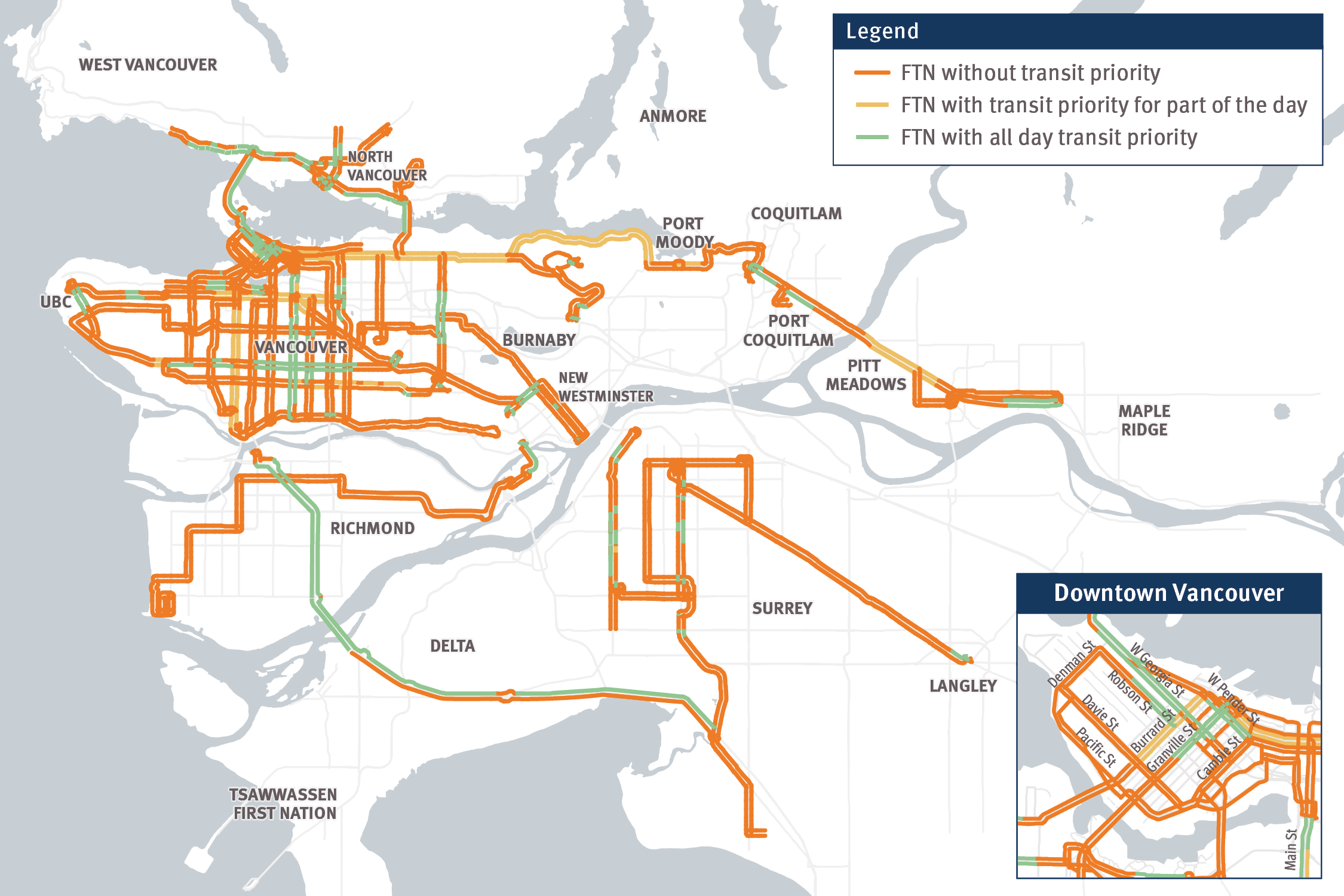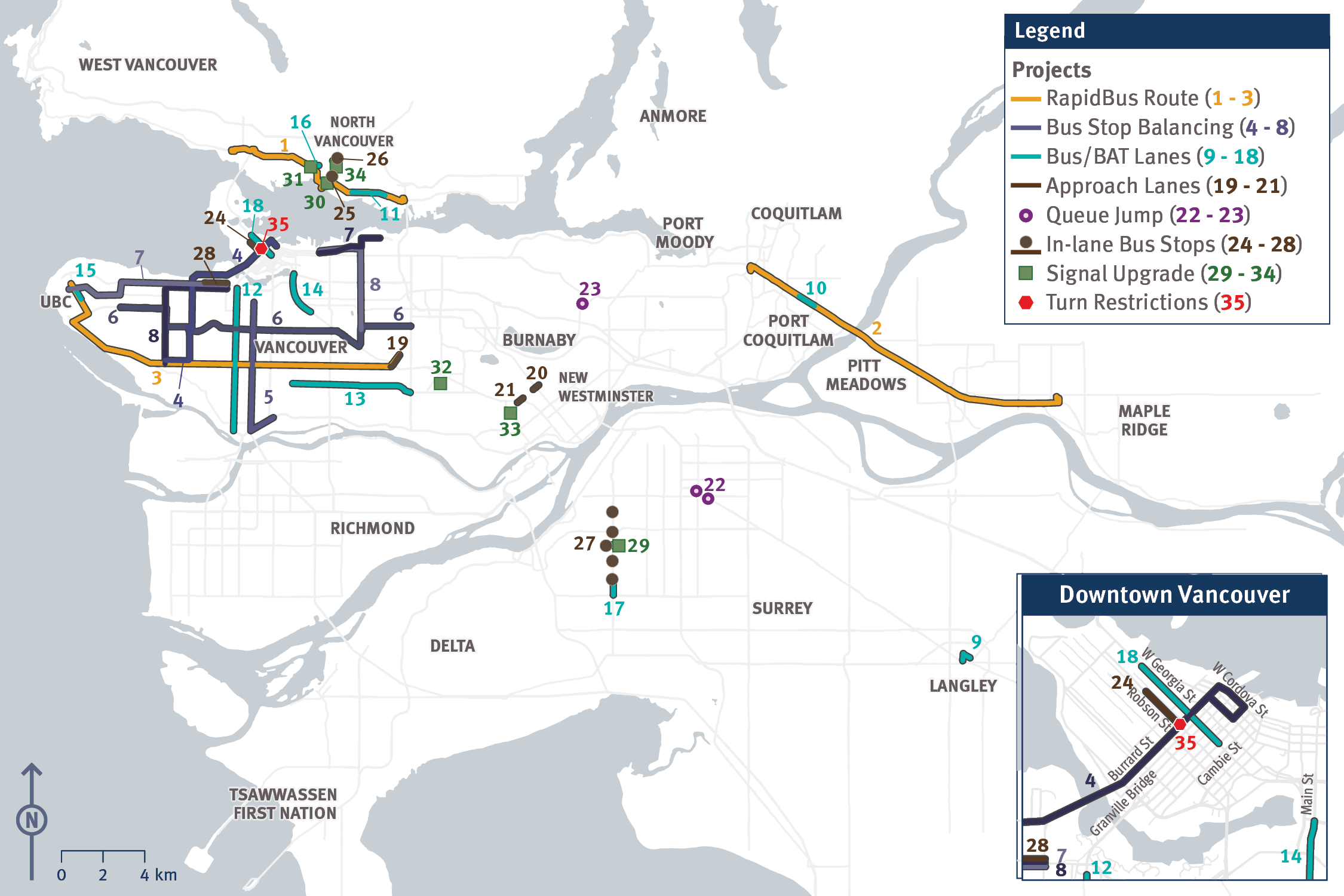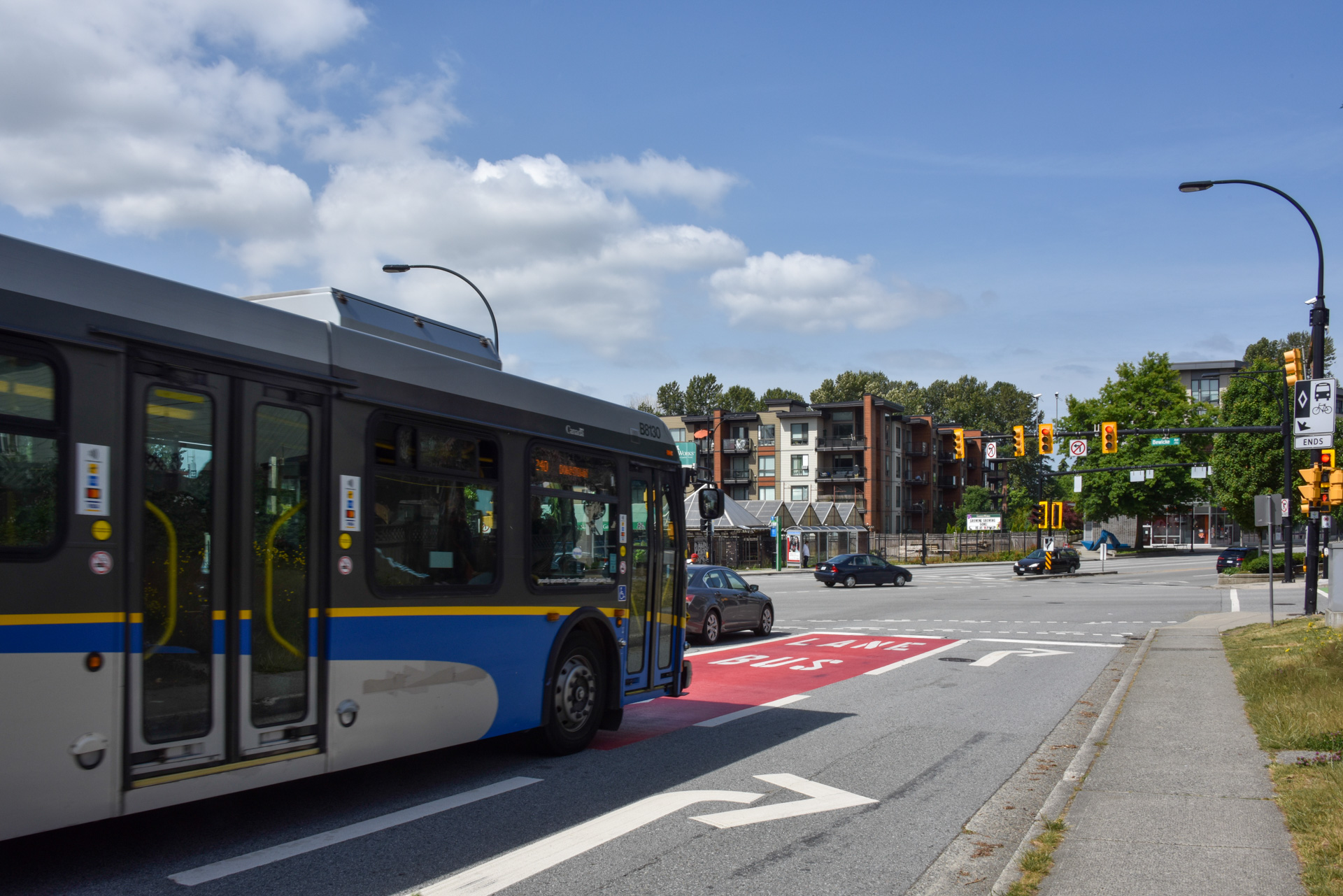New report highlights need for bus speed investments
New report highlights need for bus speed investments
Our new Bus Speed and Reliability Report finds that accelerated investments in bus priority measures are needed to mitigate the impacts growing traffic congestion has on bus speed and reliability.
This report is the second part of the 2023 Bus Speed and Reliability Report. The first part, released in February, highlighted bus delays and the reasons they occur throughout Metro Vancouver.
This new part gives an overview of measures that have been taken to mitigate delays and examines the effectiveness of those measures to help inform decision-making for future investments.
“Getting people to take transit instead of driving means making transit as convenient and reliable as possible,” says TransLink CEO Kevin Quinn. “We look forward to continuing to invest in bus speed improvements so we can make transit the most convenient travel option in the region.”
We have made a historic expansion in bus priority.
Since 2019, we have invested in $40 million into measures that improve bus speed and reliability, including:
- New RapidBus routes
- Bus Stop Balancing (optimizing distances between bus stops)
- Bus lanes, approach lanes, and queue jumps
- In-lane bus stops
- Signal upgrades and turn restrictions.
We were able to evaluate 35 of these projects for the report.
Bus priority measures are cost-effective solutions for us and our customers.
The results found that each of these types of investments improves bus speed and reliability, with many of the improvements paying for themselves through improved bus service operations.
Some measures improved bus speed by up to 35 per cent. RapidBus is 25 to 35 per cent faster than previous local service, saving customers between 12 and 28 minutes per trip during the busiest times of day.
We want to increase the scale and pace of bus priority.
Despite a historic expansion in bus priority since 2019, more work needs to be done to achieve regional goals that require using limited road space more efficiently.
Currently, bus priority covers less than 25 percent of the Frequent Transit Network. This network is a series of corridors where transit service runs at least every 15 minutes in both directions throughout the day and into the evening, every day of the week.
The results from this report will be used to inform decision-making for TransLink’s next Investment Plan update, which is anticipated in 2024. We will continue to work with government partners to fund, plan, and execute these improvements.









Dordle is a new more challenging word game that could be your next addiction. Let’s explore!
The issues are outlined in great depth, and everything is quite transparent and honest. There is no question that having the information is advantageous. Is my website incredibly lucrative in terms of sales? Please look at the following: quordle